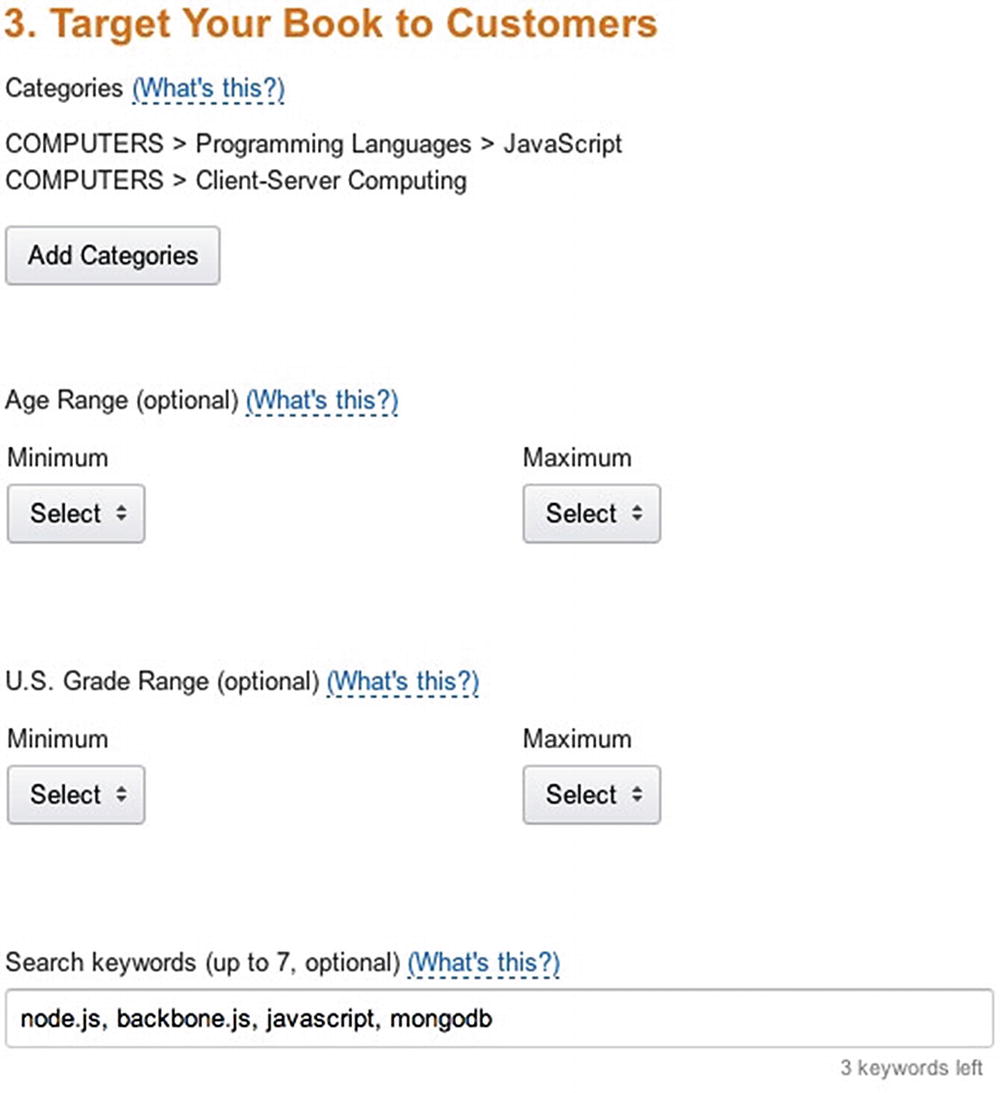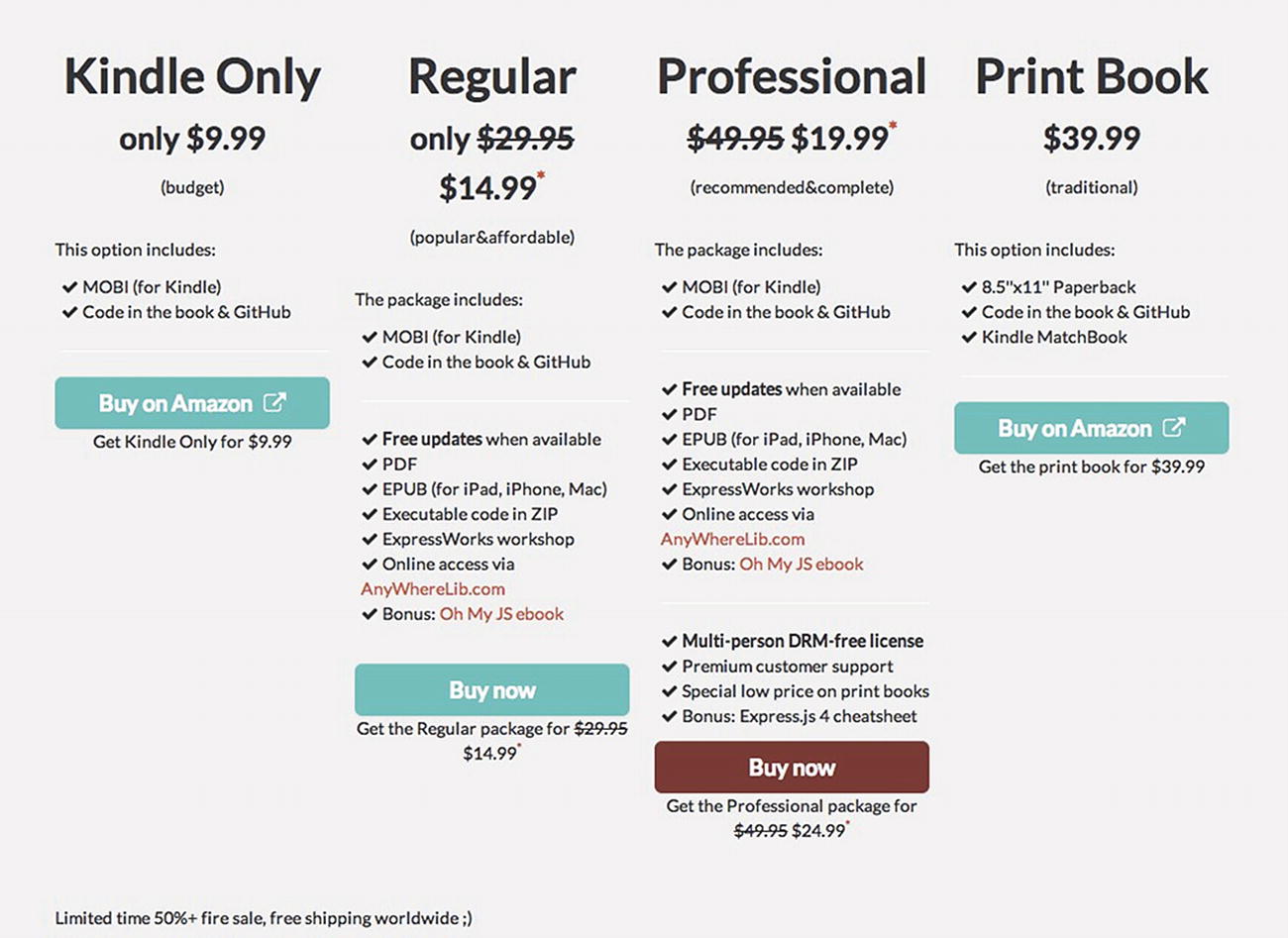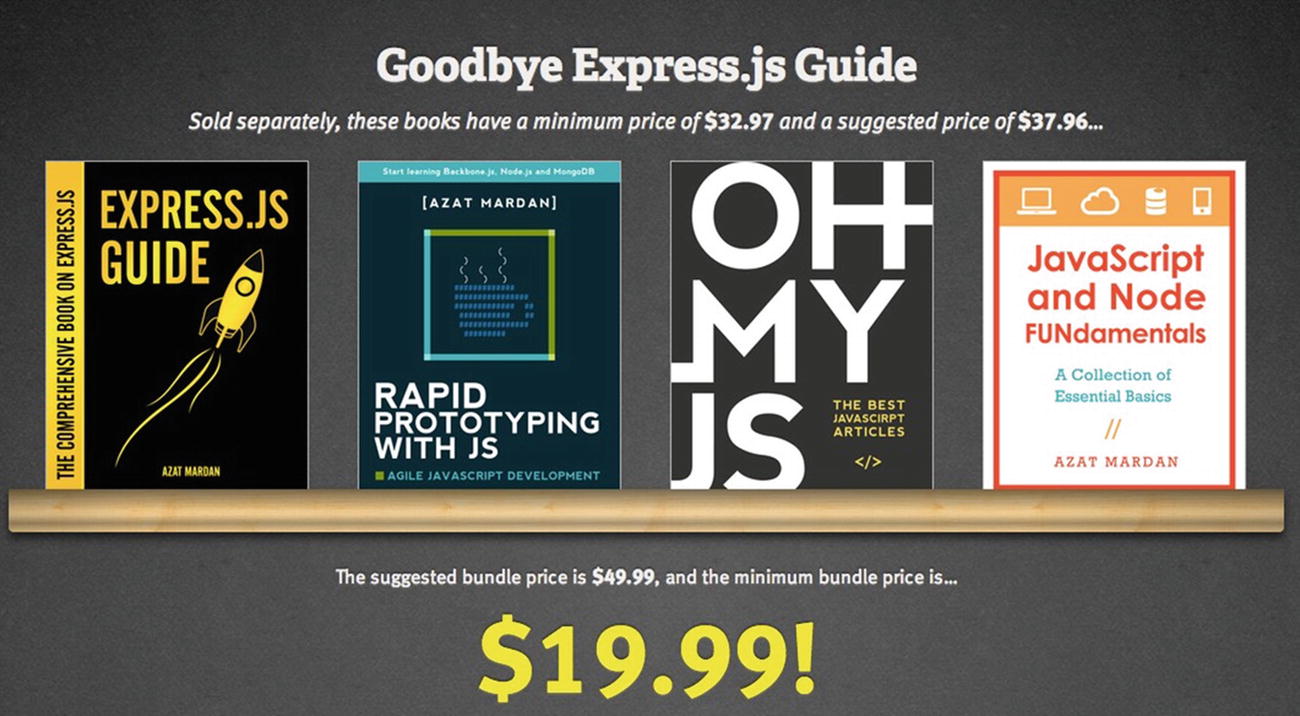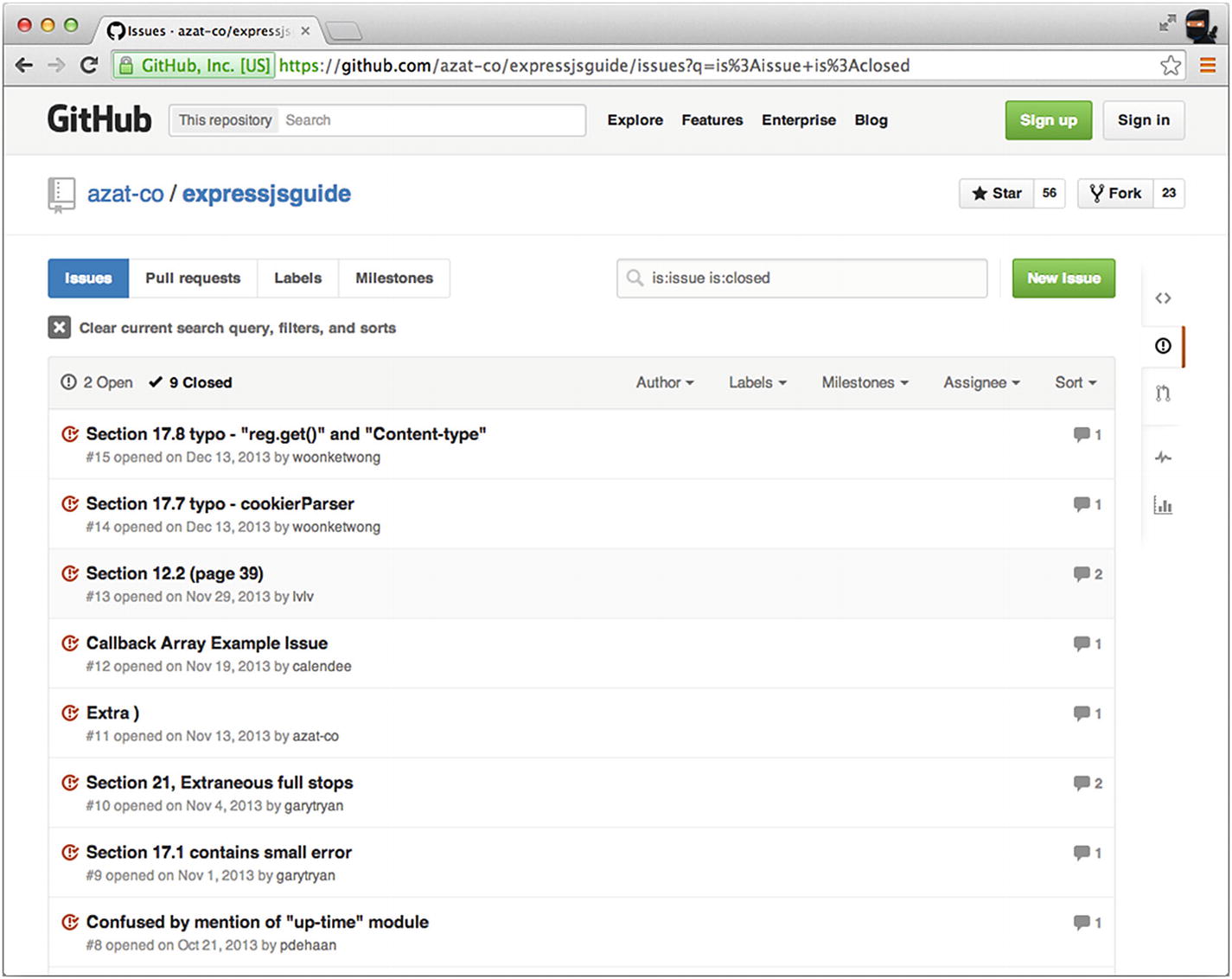
Most questions that aspiring technical authors ask me are about marketing. I think this is in part because marketing, selling, is considered by programmers to be some sort of voodoo magic. Most of us studied computer science and information technology—not business. But there is nothing magical about selling. In fact, we are all actively in sales throughout our lives. For example, during a job interview we sell our skills, on a date we sell our potential as a romantic partner, and at a job meeting we sell our ideas to colleagues.
Spread the word: Let your target audience know about you
Have a platform: Build it (i.e., a following) before creating a product
Marketplace vs. storefront: Different ways to sell
Improve Amazon sales: Tips and tricks to get to the top
Pricing: How to price your book
Packaging and bundling: How to expand your offerings
Up-selling and cross-selling: Extra streams of revenue
Things to avoid (or do last): Things that didn’t work for me as well as expected
Spread the Word
Meet-ups
Conferences
Co-workers
Ex-colleagues and random people on LinkedIn who initiate conversations and want to chat with you
E-mail signature
Facebook, Twitter, Google Plus profiles, and links to a book on each
Strangers in a Starbucks line—always have MOO1 cards for them
Public transport and airports, for example, wearing a laptop sticker or a T-shirt, and giving business cards to strangers
Always be selling! You never know where it might lead (maybe to paid guest blogging or a corporate bulk order of your books). My encounter in Starbucks with Startup Monthly2 founder Yuri Rabinovich led to the Rapid Prototyping with JS training course and consequently to my first book.
Have a Platform
It can develop writing style, habit, and skills gradually: Markdown, apps, the best time to write, and more.
It can judge demand for a certain topic, for example, What is hotter: React.js7 or Anguar.js8?
It can provide drafts and code examples for the book or even become a book, that is, blog to book.
You can sell books much more easily, because your audience is already familiar with your works; for example, Practical Node.js 9 reached #19,595 in Books on Amazon.com just a few weeks after its release (shown in Figure 5-1). The rank is for all books on Amazon.com, with millions of titles being sold there.

Practical Node.js reached #19,595 in Books on Amazon.com
So based on these points, I recommend starting your book with a blog. Of course there are exceptions10, authors who created a following once their books became popular. But this is more an exception than the rule, because not validating your idea but testing it by writing 200-300 pages is time consuming. I would do it only if I absolutely wanted to write on some topic and didn’t care about readership at all.
In other words, for readers familiar with lean startup and lean manufacturing, with blog posts you can validate book ideas faster.
Marketplace vs. Storefront
Landing page to gather e-mails: Minimal efforts to test an idea for the book.
Versatile publishing service: No extra tools necessary—Markdown or HTML can be converted to PDF, EPUB, and MOBI.
Marketplace: Its pages are SEO-friendly, you can bundle with other authors, and search can add extra exposure as well.
Leanpub allows you to contact readers about updates or promotions.
Amazon.com is on the other end of the marketplace spectrum. It has more traffic and better discovery, if Amazon.com’s algorithm picks your book, but no way to notify readers about updates or promotions.
It’s fairly straightforward to build your own landing page, and hook up PayPal11, Stripe12, Plasso13, SendOwl14 or Gumroad15. The advantage is that you get customers’ e-mails, better royalties, and more creative freedom. The disadvantage is that there is no additional exposure via marketplace search, and some readers trust unknown websites less than recognized brands such as Amazon.com (and its reviews).

Gumroad has low fees, and an intuitive and gorgeous interface
Leanpub 16: Digital marketplace and publishing platform
Amazon.com’s Kindle Direct Publishing 17: Digital marketplace
Google Play 18: Digital marketplace
iBooks 19: Digital marketplace
Lulu 20: Print on demand (POD) service provider and marketplace
CreateSpace 21: Print on demand (POD) service provider and marketplace
If you’re optimizing for revenue and/or have a solid platform already, then don’t use marketplaces: their interfaces are clunky, they don’t provide customer e-mails, and royalties are dismal.
Tip
![]() See Appendix B: Tools and Services for more e-commerce solutions.
See Appendix B: Tools and Services for more e-commerce solutions.
Improve Amazon Sales
Keywords in title and description
Categories
Reviews
Sales
In other words, the more sales and positive reviews a book has, the higher in the Amazon.com search result it will be placed. Survival of the fittest. Think about the algorithm as a Google search algorithm.
So the title and subtitle are paramount—that’s obvious. Don’t choose them lightly. Spend some time and maybe even some Google AdWords money to test different titles.
<h2>: Amazon-orange color heading
<ul>: beginning of a list
<li>: bullet point list item
<p>: paragraph

Kindle Direct Publishing form for categories and keywords
Be sure to fill in the keywords in the KDP form. A bonus is if the keywords appear frequently in the title, subtitle, and description.
Amazon has a service called Author Central22 where authors can create their profiles, so have one! Also, authors can link printed books to Kindle versions, monitor sales, and write additional descriptions for books.
Sadly, there is not much anyone can do with Amazon reviews. What’s even worse is that some people will write negative reviews if your books start to gain momentum. Try to monitor bad reviews, and if a person just needs a clarification, try to help. This might help potential readers to vote for vs. against after they see that the issue the reviewer brought was moot or that the author (you) cares a lot and you’re here to help.
Pricing
Pricing is more of an art than a science. It all depends on the real and perceived values you bring to the table and on competitors. The competitor part is easy, because you can do a Google search or lookup on Amazon.com to find out what similar authors and their publishers—if it’s a traditionally published book—are charging. It often varies from category to category; for example, Angular books are in the $40 range while JavaScript books are in the $5 range.
Info
![]()
Perceived value is how large the books are, including parameters such as format, font size, total page number, how good the cover is, how skilled and famous the author is, that is, credibility. The real value is how much time the book will save the developer or how hard the task it can help to solve. If a book can save seven days of work, that’s at least a $2,800 return on investment, considering a rather low $50 per hour rate. In San Francisco, the rates for developers are in the $60-$80 per hour range as of this writing.
Self-published authors tend to charge higher prices ($50) mostly due to their small platform (and the effort that they’ve put in and the need to recoup). I personally disagree with such pricing, because they get way better royalties and usually their books are inferior to traditionally published ones. Most of my self-published books are priced two to four times below what a similar traditional book would cost.
Overall, the market for software and IT books is not as saturated as for fiction, therefore somewhere about $15-$40 is a good spot.
If you plan to sell on Amazon.com, the highest price that makes sense is $9.99, because for higher prices the marketplace will take your arm, leg, and unborn child (70% royalty). The way it works, you can choose between two modes of selling: 70% royalty, with a $2.99-$9.99 price window, or no price limitations, but only a 30% royalty. There’s fine print as well—if you opt for a 70% royalty, Amazon can lower your $9.99 price at any time (let’s say to $7.99) to fight with Barnes & Noble23, or Google Play24 marketplaces.
Therefore, for some authors it makes sense to sell only print books on Amazon.com.
As mentioned before, most authors opt to make their books free online (to get attention) and then charge for PDF/EPUB/MOBI if someone wants the convenience. In my humble opinion, this is a flawed strategy because most programing books are better to read on a laptop or desktop so you can run examples (not on Kindle or iPad). Nevertheless, there are a lot of success stories of authors open sourcing their books, so you might want to try it yourself.
Packaging and Bundling

Express.js Guide packages
The weak sales of the premium Professional packages were partially offset by the psychological factor known as a decoy effect29. In other words, most visitors choose the middle Regular package instead of the cheapest Kindle package.
Info
![]()
Decoy effect or decoy marketing30 occurs when instead of two products, the seller offers three—with the third being inferior to the more expensive of the initial two, thus helping buyers to make a decision toward the most expensive of the initial two products. The decoy situation sells better compared to a situation with just the initial two products. Apple is a company known for practicing decoy marketing31.
The print book is usually its own item because there are some people who love print books and others who would do anything to avoid buying/having them (like me!).

Goodbye Express.js Guide rainmaking bundle

Rapid Prototyping with JSRapid Prototyping with JS exposure-bringing bundles
Mini-books like Oh My JS 34 and JavaScript and Node FUNdamentals 35 also work great to create value in bundles and as stand-alone marketing products when given away for free (not recommended) or close to free. For example, these mini-books with fewer than 200 pages together have 5,000 readers whom I can e-mail and cross-sell other products. Another benefit—if readers liked the mini-books, they have no fear buying more expensive products. Just make sure that the quality of any mini-books is stellar (even better than the main books’ quality), including the cover, and that they lack abundant errors. It’s easy to fall into thinking that because it’s a free book, you don’t have to make it good. But this is your door to a new audience, and you should start with your best foot forward.
Up-Selling and Cross-Selling
Up-selling is offering an upgrade to the existing product (for example, going from a regular package to a premium one). Cross-selling, on the other hand, is a promotion for a different product or category—for example, purchasers of Rapid Prototyping with JS get 50% off of Express.js Guide.
They both are great things to have and use, because they bring in extra revenue that wouldn’t be there otherwise. Another added benefit is targeting people who just made the purchase, so they have less fear buying other products.
Most of the platforms like Leanpub and Gumroad allow you to create coupons that you can paste into the products’ thank-you or receipt messages.
Launch
Launch typically requires some sort of audience, maybe blog readers or an e-mail list. The idea is that the author prepares and educates buyers before the product is sold. This creates anticipation and momentum once the sale has started.
- 1.
Start of the book: to give the idea with a tentative Table of Contents (TOC) and description
- 2.
Almost ready or midway ready: to remind the audience and potential buyer that the project is alive
- 3.
Finished and ready to go soon: you’re probably taking care of some final finishing touches like editing and covers, so it’s safe to announce the date
Then you open the sale and collect money. You can also gather e-mails for preorders, alpha readers, and reviewers. Preorders come from people who make a decision now, but the delivery and payment will happen later. It’s a great way to judge whether the pricing is right. Alpha readers are preorder buyers whom you sent copies to earlier in exchange for a promise of feedback. And reviewers are readers who typically get the book for free in exchange for the promise of a review. Google forms and Mailchimp work best for e-mail lists and announcements.
Gmail allows you to send up to 500 e-mails per day from one account. Just make sure to put the e-mail list addresses in BCC to protect their privacy.
It’s easy to forget on what day or to what Facebook group or e-mail list you sent an update, so having a marketing plan and putting it on Google Calendar are great ideas.
Things to Avoid
Landing pages: I would rather create a preorder page, because interest from nonpaying users is not the same as from paying ones (i.e., typically the interest from paying users is less).
Facebook and Google ads: Too expensive for a $15-$30 book.
A/B testing: The traffic to most of my books’ sites is too low (<100/day) to gather anything meaningful to justify the time spent setting the testing up.
Slow and super expensive editors and designers : Unless you know that the book will be a success, it isn’t worth the expense.
Support
E-mail
Twitter account link
Facebook account link
Web site link
GitHub repository link

Using GitHub Issues for Express.js Guide errata
The shorter feedback cycle doesn’t mean anyone should ship half-baked products full of bugs, typos, and the like. It means you can deliver less content, for example, a few first chapters only.
Once in a while, you might receive nasty feedback, hate mail, or a bad review, or experience trolling37. Try to learn, but don’t take them seriously because in most cases these people either didn’t read the book’s description carefully and expected it to solve all their problems, or they are just upset with their lives in general. The best solution if there’s nothing to learn—ignore. Never try to engage in a meaningful conversation because you are not likely to change their minds, but you will waste energy and time.
It’s funny to remember now: I had “a friend” tell me that nobody will buy my books because my English is not good, and just recently I got an e-mail in which a person was upset and tried to insult me because he bought the book at the full price, not at a discount, so I just deleted him from my mailing list. These types of customers only complain and are hard to please. It’s a better ROI to focus your time and attention on the right people.
